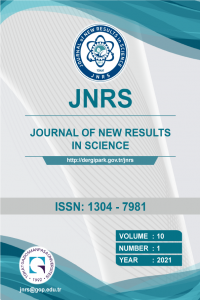General Examınation of Fruıt Juice Consumption Preferences in Tokat Province Central District
The main material of this research done in Tokat province Central district is the survey data made in 2016. In this study, which is summarized and interpreted on the tabulated data obtained, logit analysis was used to investigate the factors affecting fruit juice consumption. According to the research results; it was determined that 10% of the consumers who participated in the survey did not consume fruit juice, and the average consumed amount of fruit juice consumption per person was 7.5 lt/month. Among the reasons for not consuming fruit juice, the first place is thought to be is being harmful. It has been determined that ready-made product consumption preference (26.01%) is low in fruit juice consumption, cherry juice is the most consumed fruit juice and orange juice is the least preferred fruit juice. While purchasing fruit juice, a significant proportion of consumers (85.64%) preferred brand and they said that tea was the most preferred drink instead of fruit juice. According to the logit analysis model results, variables affecting the likelihood of families' consumption of fruit juice are; gender, education and overconsumption. The coefficient of over-consumption variable is negative while the coefficient of gender and education variables is positive.
Keywords:
: Tokat province, logit analysis fruit juice,
___
- Referans 1 Açkurt, F. (2012).http://www.aroma.com.tr/images/bilgi-bankasi/filiz-ackurt-sunum-en-son.pdf(access:2 Ocak 2018).
- Referans 2 Anonymous (2016a). http://www.dimes.com.tr/HealthyLivingInstitute.aspx?ID=7. (access:8 February 2016).
- Referans 3 Anonymous (2016b). https://www.meyed.org.tr/files/bilgi_merkezi/sektorel_veriler/meyve_suyu_sektoru_raporu_2011.pdf
- Referans 4 Babayiğit, M. A.,Oğur, R., Tekbaş, Ö. F., & Hasde, M. (2006). Investigation of non-alcoholic beverage consumption habits and affecting factors in young adult males. General Medical Journal, 16(4), 161-168.
- Referans 5 Ekşi, A., & Koçaker, A. (2005). Production and consumption of fruit juice in Turkey 2004.Fruit Juice Industry Association Bulletin, 3, 2. (access:12 February 20016) Referans 6 Türk, M., Gürsoy, Ş. T., & Ergin, I. (2007). Nutrition habits of high school freshmen in urban areas. General Medical Journal, 17(2), 81-87.
- Referans 7 Ozdamar, L. (1999). A genetic algorithm approach to a general category project scheduling problem. IEEE Transactions on Systems, Man, andCybernetics, Part C (Applications and Reviews), 29(1), 44-59.
- Referans 8 Özdes, A., Aktas, E., & Koc, A. (1999). Concentrated fruit juice analysis with "Tobit" model.Tr. J. of Agriculture and Forestry 23: 493-499.
- Referans 9 Selçuk, Ş., Tarakçı, Z., Şahin, K., & Coşkun, H. (2003). Dairy consumption habits of undergraduate students of Yüzüncü Yıl University. Yüzüncü Yıl University Agricultural Science Magazine, 13(1), 23-31.
- Referans 10 Türk, M., Gürsoy, Ş. T., & Ergin, I. (2007). Nutrition habits of high school freshmen in urban areas. General Medical Journal, 17(2), 81-87.
- Referans 11 Yılmaz, E.,& Özkan, S. (2007). Examination of eating habits of university students. Fırat Health Services Magazine, 2(6), 87-104.
- ISSN: 1304-7981
- Yayın Aralığı: 3
- Başlangıç: 2012
- Yayıncı: TOKAT GAZİOSMANPAŞA ÜNİVERSİTESİ
